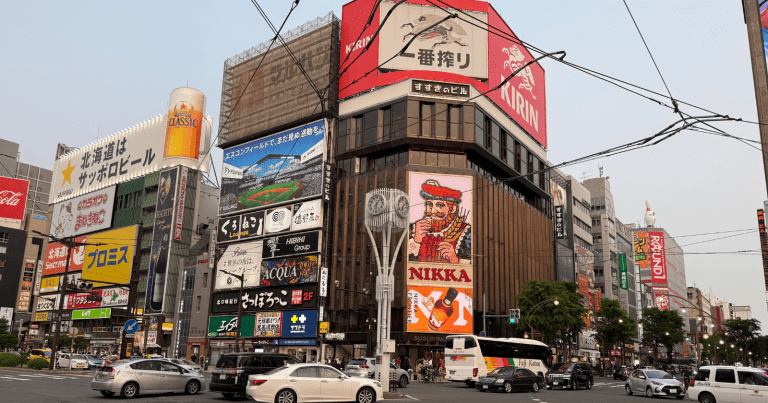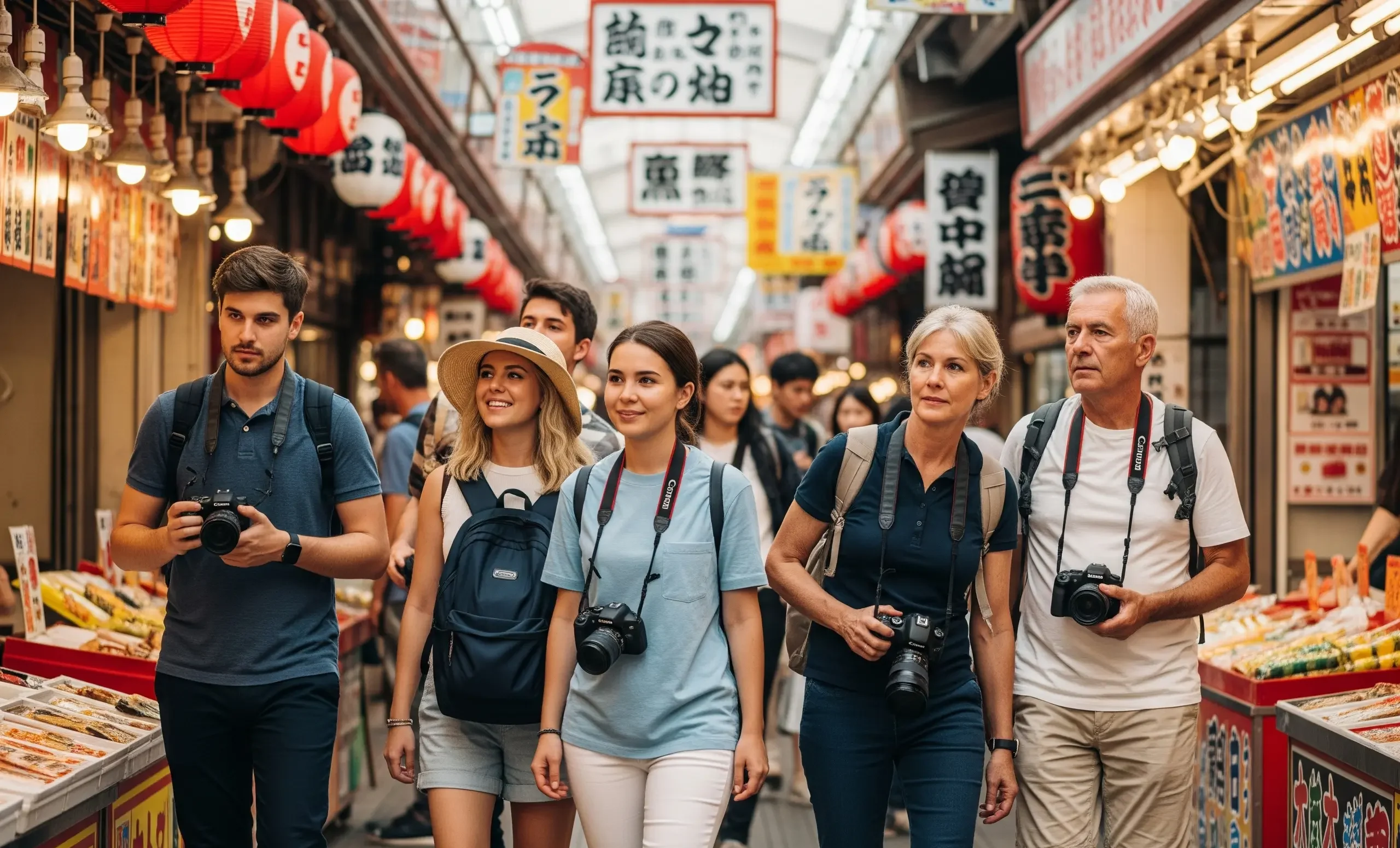
Stepping into Japan feels like entering a different world, a harmonious blend of ancient traditions and cutting-edge modernity. I’ve had the absolute joy of visiting Japan not once, not twice, but three times, I’ve come to appreciate the profound beauty of its culture and the incredibly polite nature of its people. Each visit has deepened my understanding, not just of its captivating landscapes and delicious food, but also of the unwritten rules that govern daily life. And let me tell you, as a fellow independent traveler and wanderer, knowing these rules is your golden ticket to a truly authentic and respectful experience. You don’t want to be the rude tourist, inadvertently causing offense or sticking out like a sore thumb.
This guide will walk you through 11 crucial things you absolutely CANNOT do when traveling to Japan. Trust me, these aren’t just polite suggestions; they are the keys to unlocking a smoother, more enjoyable, and truly immersive journey. Let’s dive in and transform you from a potential cultural blunderer into a savvy, respectful Japan explorer.
1. Do NOT Be Loud or Talk on the Phone in Public Transport

This is perhaps one of the most immediate and glaring differences you’ll notice when you first use Japan’s impeccable public transport system. Whether you’re on the bustling Yamanote Line in Tokyo or a local bus winding through Kyoto’s streets, a sense of profound quiet pervades. People are typically engrossed in their phones (silently, of course), reading, or simply observing. Loud conversations, especially on mobile phones, are an absolute no-go. It’s considered extremely disruptive and disrespectful to fellow passengers.
I recall my first visit to Tokyo, marveling at the efficiency of their train system. I was so used to the lively, often boisterous public transport in Southeast Asia, where conversations flow freely.
On one occasion, I instinctively answered a call from a friend, speaking at my usual volume. Within seconds, I felt eyes on me, subtle but firm. A quick glance around revealed the universal look of polite disapproval. I immediately whispered my apologies into the phone and ended the call, my face flushing with embarrassment. It was a clear, silent lesson that I never forgot.
The Japanese prioritize collective harmony, and your quiet demeanor contributes directly to that shared peace. If you must take a call, step off the train at the next station, or better yet, send a text.
2. Do NOT Eat or Drink While Walking or on Local Transit
While snacking on the go is a common sight in many parts of the world, it’s largely frowned upon in Japan. You’ll rarely see locals munching on food or sipping drinks as they stroll through the streets or navigate crowded train stations. The general rule is to consume food and beverages in designated areas, such as cafes, restaurants, or even vending machine areas where you can finish your drink before moving on. This practice is rooted in cleanliness and consideration for others. Eating while walking risks spilling, leaving crumbs, and potentially inconveniencing others in close quarters.
This extends to local trains and buses as well. While the Shinkansen (bullet train) is an exception, where you’ll find people enjoying Japanese snacks and bento boxes, regular commuter lines are not places for a mobile feast. Finish your coffee before you board, and save your delicious street food finds for a park bench or a quiet corner. This small act of mindfulness goes a long way in showing your respect for Japanese customs.
3. Do NOT Disregard Queues (Lines)

The concept of queuing is a deeply ingrained part of Japanese society, and you’ll encounter it everywhere: at train stations, bus stops, ATM machines, convenience stores, popular restaurants, and even public restrooms. Order and fairness are paramount, and everyone is expected to wait their turn patiently. Jumping a queue, no matter how small or seemingly insignificant, is considered incredibly rude and disrespectful to everyone else who is waiting.
I distinctly remember a moment during my second trip to Japan when I was feeling a bit flustered and distracted at a busy train station. I saw a ticket machine open up and, without thinking, walked straight towards it, only to realize (as a line formed behind me) that there was an unspoken, yet very clear, queue that had already started slightly to the side. The gentle murmurs and pointed looks were all I needed to understand my mistake. I quickly apologized, stepped back, and joined the end of the newly formed line, feeling a wave of embarrassment wash over me.
From that day on, I made it a point to always scan for potential queues, even when there isn’t a visible rope or sign. When in doubt, observe what others are doing, and if a line isn’t obvious, simply ask politely, “Sumimasen, kono retsu desu ka?” (Excuse me, is this the line?). This simple gesture shows you’re making an effort.
4. Do NOT Tip
One of the most liberating aspects of dining or receiving service in Japan is the absence of a tipping culture. Unlike many Western countries where tipping is expected and often comprises a significant portion of a service worker’s income, in Japan, it’s simply not done. Offering a tip can actually be seen as confusing, awkward, or even insulting, implying that the service provided wasn’t up to standard and requires extra incentive.
Japanese service is meticulously attentive and professional because that is the standard, not because they expect additional compensation. The price you see on the menu or for a service is the total price you pay. Your appreciation is best shown through a sincere “Arigato gozaimasu” (thank you very much) and by adhering to other cultural norms, such as being punctual for reservations or being mindful of noise levels in quiet establishments. For more detailed information on this unique aspect of Japanese etiquette, you can refer to resources like Japan-Guide’s section on tipping.
“People will forget what you said, people will forget what you did, but people will never forget how you made them feel.”
This quote by Maya Angelou beautifully encapsulates the essence of showing respect while traveling. It’s not just about following rules, but about leaving a positive impression through your mindful actions.
5. Do NOT Use Chopsticks Incorrectly
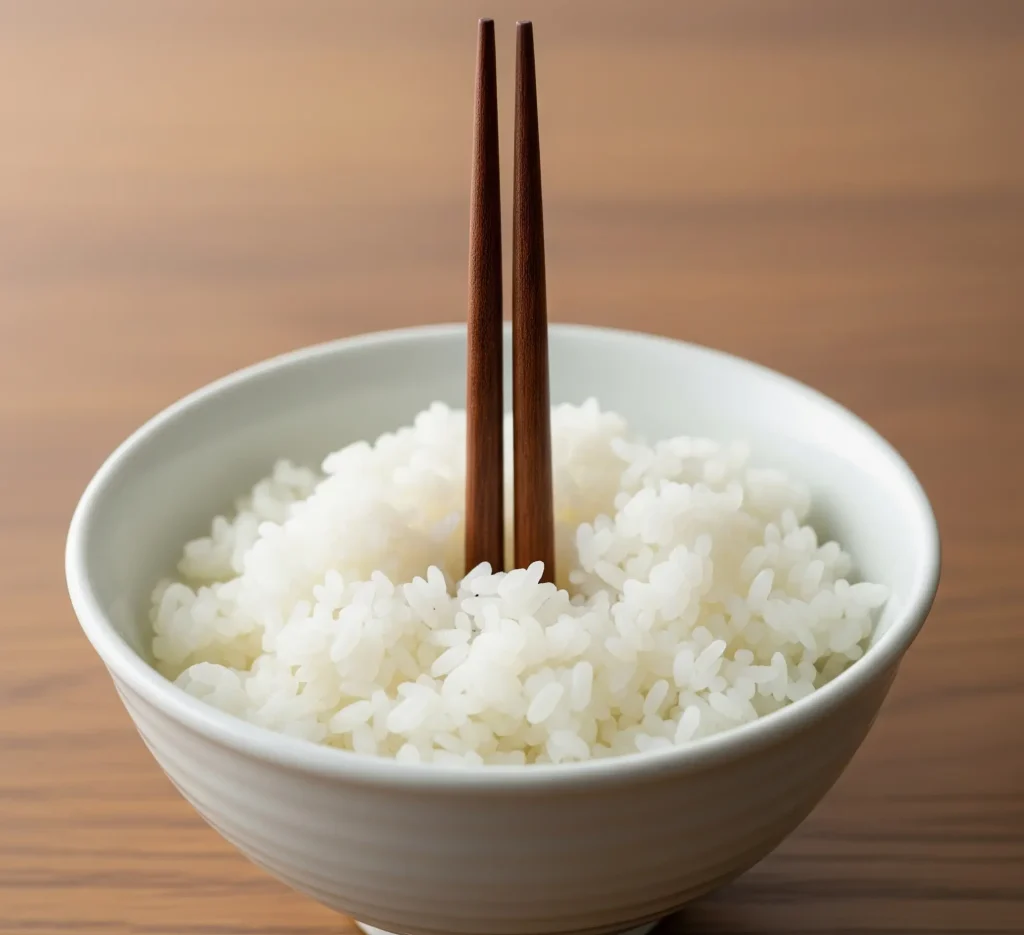
Chopsticks are an integral part of the Japanese dining experience, and there are a few important etiquette rules to master to avoid appearing impolite. Firstly, never stick your chopsticks upright into a bowl of rice; this resembles offerings made at funerals and is considered a major taboo. Secondly, avoid passing food directly from your chopsticks to someone else’s. This also mirrors a funeral ritual where bone fragments are passed. If you need to share food, use serving chopsticks or place the item on a small plate for the other person to pick up.
Other no-nos include using your chopsticks to point at people or dishes, waving them around while talking, or spearing food. When not in use, place your chopsticks on the chopstick rest (hashioki) or across the top of your bowl, never directly on the table. Mastering these nuances shows you’ve put in the effort to understand and respect Japanese dining customs, enhancing your experience of food in Japan.
6. Do NOT Wear Shoes Indoors (Especially Homes, Temples, Some Restaurants)
This is perhaps one of the most fundamental rules of Japanese etiquette: remove your shoes before entering any indoor space, be it a home, a temple, a traditional ryokan (inn), some restaurants, or even certain public facilities like clinics or schools. You’ll usually find a genkan (a small entryway or sunken area) where you can take off your outdoor shoes and often find slippers provided for indoor use. Always face your shoes towards the door you entered, making it easy to slip them back on when you leave.
The reasoning is simple: cleanliness and hygiene. Japanese homes and traditional establishments often feature tatami mats, which are easily soiled and damaged by outdoor footwear. It’s a sign of respect for the space and its inhabitants. Failing to remove your shoes is akin to walking muddy boots through someone’s living room. Always wear clean socks, as you might be asked to remove slippers (e.g., before stepping onto tatami mats in a traditional room) or use separate toilet slippers when using the restroom.
7. Do NOT Ignore Rubbish Separation Rules

Japan is famously clean, yet you’ll notice a distinct lack of public trash cans. This isn’t an oversight; it’s a reflection of Japan’s meticulous waste disposal system, which relies heavily on separation and recycling. You’re expected to carry your rubbish with you until you find a designated bin, often located near convenience stores like 7-Eleven or in train stations. Even then, you can’t just toss everything together. Japanese waste sorting is incredibly detailed.
Bins are typically separated into categories like PET bottles (plastics), cans, burnable (general waste), and sometimes paper or glass. Always check the labels on the bins before discarding your waste. For example, plastic bottles often require you to remove the cap and label before putting them into separate slots. If you’re unsure, it’s better to hold onto your trash until you can ask or find a convenience store where the staff can guide you. Littering is absolutely unacceptable and carries a heavy social stigma.
8. Do NOT Blow Your Nose Loudly in Public
While clearing your nasal passages might be a discreet, or even necessary, act in many Western countries, in Japan, blowing your nose loudly in public is considered quite rude and unhygienic. If you have a cold or allergies, try to be as discreet as possible, perhaps excusing yourself to a restroom. Sniffling, while not ideal, is generally preferred over a loud honk.
This cultural norm stems from a strong emphasis on public hygiene and consideration for others. If you’re feeling under the weather, it’s common practice to wear a surgical mask in public to prevent the spread of germs. This thoughtfulness contributes to the collective health and comfort of the community. Carry tissues with you, and if you must blow your nose, do so quietly and discreetly, ideally in a private setting like a restroom.
9. Do NOT Fail to Observe Onsen/Sento Etiquette
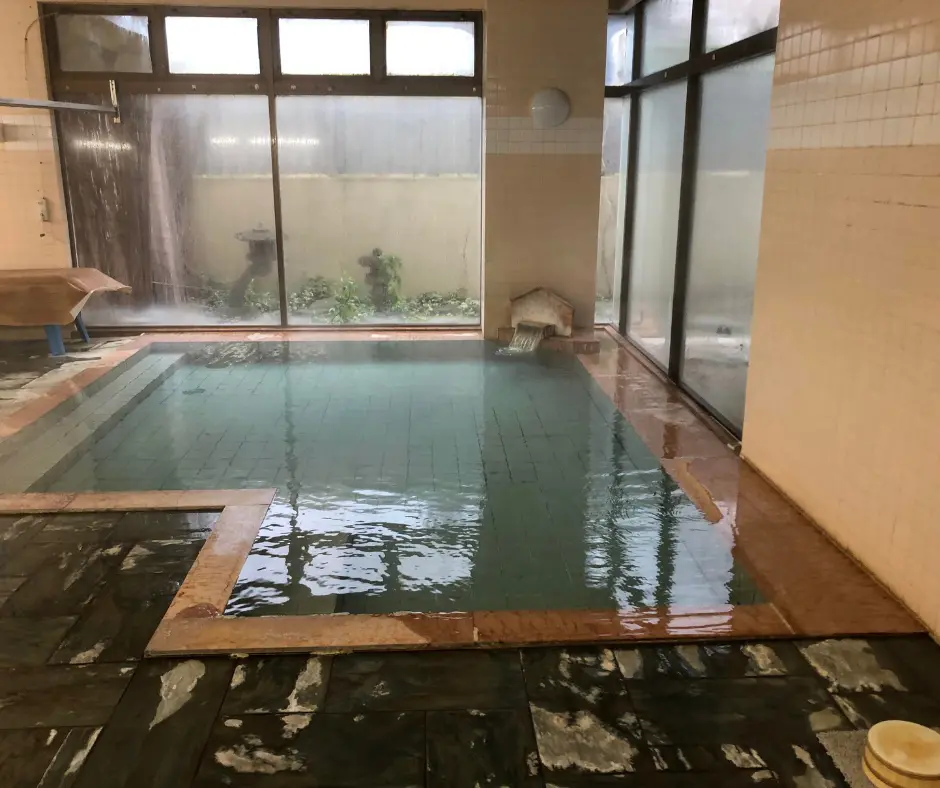
Visiting an onsen (natural hot spring bath) or sento (public bathhouse) is a quintessential Japanese experience, offering deep relaxation and cultural insight. However, it comes with a strict set of etiquette rules that must be followed. The most important rule is to wash thoroughly (and I mean thoroughly, soaping up and rinsing completely) before entering the communal bath. There are designated washing stations with stools, showers, and soap for this purpose. The bath itself is for soaking, not cleaning.
Tattoos have historically been associated with organized crime in Japan, and while attitudes are slowly shifting, many onsens, especially traditional ones, still prohibit guests with visible tattoos. If you have small tattoos, you might be able to cover them with waterproof patches (available at some convenience stores or pharmacies). If you have large or numerous tattoos, it’s best to research tattoo-friendly onsens beforehand or consider private onsen rooms if available.
Remember to enter the communal bath naked (swimsuits are not allowed), keep your hair out of the water, and never let your small modesty towel touch the water. Understanding these rules is key to enjoying this unique experience respectfully, much like knowing the rich traditions and customs of Thailand before visiting.
10. Do NOT Be Late for Appointments or Reservations
Punctuality is a deeply ingrained virtue in Japan, bordering on an art form. Whether it’s a train schedule, a business meeting, or a dinner reservation, timeliness is expected and highly valued. Being late, even by a few minutes, is considered disrespectful and can cause inconvenience for others. It implies a lack of consideration and can be seen as a sign of unreliability.
If you have a reservation for a restaurant, a tour, or any other appointment, make every effort to arrive on time, or even a few minutes early. Japanese public transportation, especially the trains, are renowned for their punctuality, so factor in travel time, potential transfers, and a buffer for unexpected delays. If, for unforeseen circumstances, you anticipate being even slightly late, it’s always polite to call ahead and inform them, offering your sincere apologies. This proactive communication shows respect for their time and planning.
11. Do NOT Disrespect Sacred Sites (Shrines/Temples)
Japan is dotted with countless beautiful shrines and temples, places of spiritual significance and tranquility. When visiting these sites, remember they are not just tourist attractions but active places of worship. Showing respect is paramount. Dress modestly, covering your shoulders and knees. Speak in a low voice, if at all, and avoid boisterous behavior. Photography is often permitted, but always check for signs indicating restrictions, especially inside main halls or during ceremonies. Never use a flash unless explicitly allowed, as it can be disruptive or damage fragile artifacts.
Before entering the main hall of a shrine, you’ll typically find a water basin (temizuya) where you can purify your hands and mouth. Use the ladle provided, pouring water over your left hand, then your right, then rinsing your mouth, and finally, tilting the ladle to clean its handle. When bowing at the main altar of a shrine, the general etiquette is to bow twice, clap twice, make your wish or prayer, and then bow once more. At temples, simply bow and offer a quiet prayer. These gestures, though small, show profound respect for the culture and spiritual beliefs of Japan, making your visit not just a sightseeing trip, but a truly meaningful cultural immersion for any first-time travelers.
“Travel is fatal to prejudice, bigotry, and narrow-mindedness, and many of our people need it sorely on these accounts.”
Mark Twain’s timeless words remind us that travel is not just about seeing new places, but about expanding our understanding and empathy for different cultures. Embracing local customs, even the ones that feel foreign, is a testament to this growth.
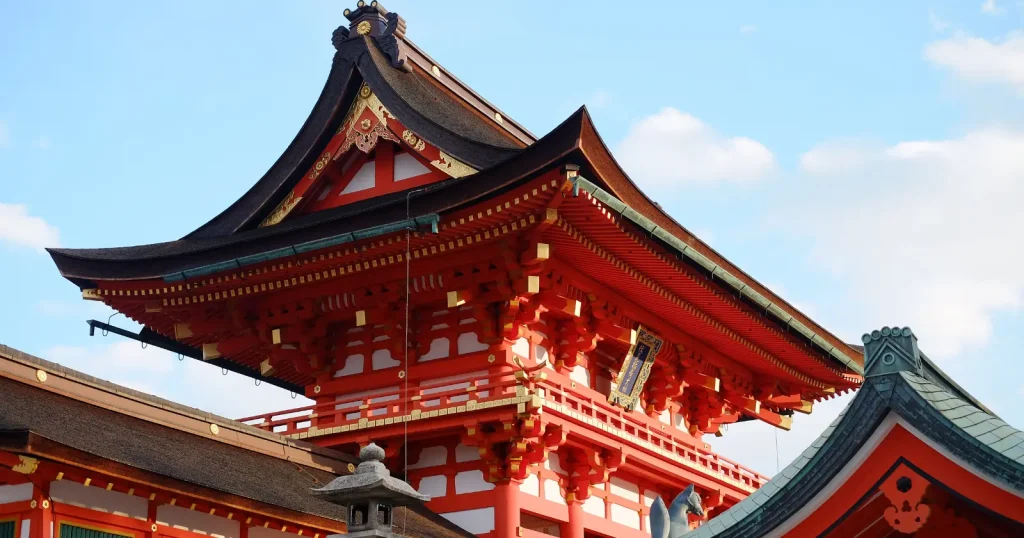
Advanced Insights for a Seamless Experience
Beyond these foundational “cannot-dos,” there are layers of Japanese etiquette that, once understood, elevate your travel experience. Consider the subtle art of bowing: there are different degrees of bows for different situations – a slight nod for casual greetings, a deeper bow for showing respect or apology.
While you’re not expected to master them, a simple, polite head nod or slight bow is always appreciated. When interacting with locals, especially in rural areas, a basic grasp of Japanese phrases like “Arigato gozaimasu” (thank you), “Sumimasen” (excuse me/sorry), and “Konnichiwa” (hello) will open doors and express your genuine effort. Even if your pronunciation isn’t perfect, the attempt itself is highly valued.
For those diving deeper into Japanese culture, researching specific regional customs can be immensely helpful, as etiquette might slightly vary from Tokyo to Kyoto or the countryside. Online forums like Japan Travel Forum on Reddit or dedicated travel blogs offer real-time insights and personal experiences. Official tourism sites like JNTO (Japan National Tourism Organization) are excellent resources for accurate and up-to-date information on customs and regulations. Learning about Japanese hospitality, known as ‘omotenashi,’ can also provide a framework for understanding the underlying philosophy behind many of these rules. It’s a selfless approach to service, anticipating needs and going above and beyond without expectation of reward.
Finally, always remember to carry a small bag for your trash until you find appropriate disposal. And when exploring local eateries, if you see a small counter or table with a few seats, it’s often polite to finish your meal and vacate the seat promptly, especially during busy hours, allowing others to enjoy their turn. These small considerations are deeply appreciated and contribute to the smooth flow of daily life in Japan.
Conclusion: Travel with Respect
Navigating Japan’s rich cultural tapestry might seem daunting with its seemingly endless rules, but it’s truly about approaching your journey with an open mind and a respectful heart. By internalizing these 11 crucial “cannot-dos” – from maintaining quiet on public transport to honoring queue culture and sacred sites – you’ll not only avoid being the rude tourist but also gain a deeper appreciation for the harmony and thoughtfulness that defines Japanese society.
My own experiences, including those awkward moments of cultural missteps, have only enriched my understanding and connection to Japan. Each lesson was a step towards becoming a more mindful and savvy traveler. Remember, your effort to adapt and respect their way of life is perhaps the greatest compliment you can pay. So go forth, explore, and immerse yourself. You have the knowledge now to travel more confidently and effectively.


